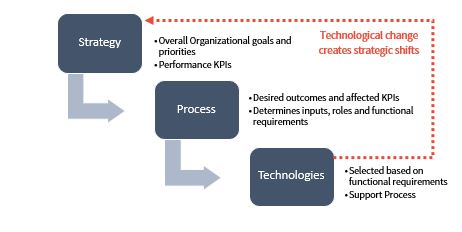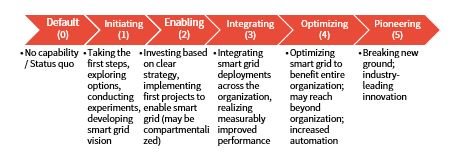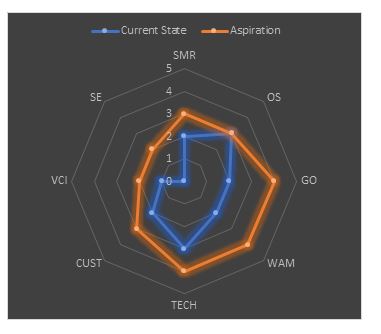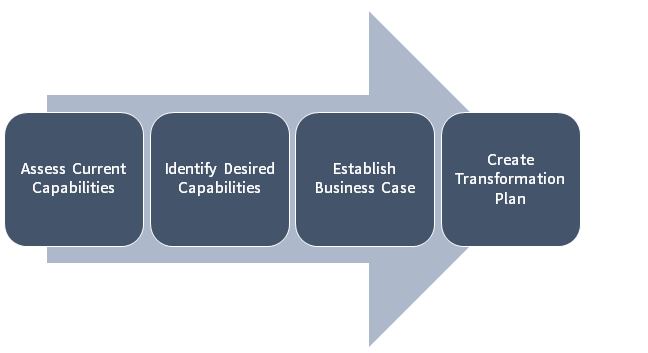Generating Value through Smart Grid Transformation
For much of the 20th century, electric utilities saw a steady expansion of their infrastructure to serve an increasing number of customers with increasing needs for electric power. Since the turn of the millennium, this storyline has shifted. Electric utilities are facing a different array of challenges and opportunities, including ageing infrastructure, increased distributed and renewable generation, and changing customer behaviours. Many utilities are currently in a process of evolution brought on by these changing conditions and enabled by more advanced technology. The term “Smart Grid”, first coined in the early 2000’s can be broadly defined as a modernization of the electricity delivery system that enables two-way flows of energy and information to optimize the operation of its interconnected elements. The smart grid leverages computing and communications technologies to enable greater automation and real-time visibility and control of grid elements. This transformation has implications not only for the way in which utilities operate the power grid, but for the way they manage their assets, workforce, and customer service elements. The more distributed, flexible model also enables greater integration of renewable energy and energy storage technologies that are important elements in achieving a low-carbon future.
The Smart Grid Journey
Achieving a smarter grid is a long-term process. Many utilities have modernized aspects of their systems, for example, implementing smart meters. However in many cases these initiatives are treated as specific technology implementation projects, managed largely within a single organizational silo. For example, smart meter technology may be enabling automated meter reading, but is not being leveraged to enable outage information and fault detection or provide an enhanced online customer portal. Moreover, the value created by each of these use cases may not be adequately quantified in the planning stage or tracked and optimized post-implementation. Maximizing the value of technology investments requires planning and prioritizing the capabilities they will enable, in consideration of information linkages across function areas. Unlocking these capabilities represents the individual steps of a larger journey, navigating a dynamic environment, as both technologies and the drivers for transformation continue to evolve. Critical to the success of the smart grid transformation journey is that it starts at the strategic level, with the definition of overall goals, priorities and KPIs. The business processes need to be defined that align with the strategic goals, and which are designed to advance improvements in the specific KPIs. The technology components are selected based on the requirements defined by the processes that they will enable. The strategic planning process must also evaluate the opportunities and threats created by technological change and address these through strategic shifts.
Mapping the Landscape—Smart Grid Capabilities, Technologies, and Processes
The smart grid is often viewed as enabling and integrating new technologies. While technology is an essential component of smart grids, it is more appropriate to consider the smart grid as a range of capabilities. Achieving these capabilities require a shift in business processes, enabled by technologies. The concept of a maturity model is useful in developing an understanding of the range of capabilities across various domains of utility operations. The Smart Grid Maturity Model (SGMM) was originally conceptualized by the software industry as a tool for planning modernization initiatives within the utility sector. The model defines a set of eight smart grid domains and five levels of maturity. Based on the SGMM, the following are examples of the functional domains that should be considered as part of a smart grid strategy[1]:
- Strategy, management, and regulatory: How the utility conducts planning, governance and stakeholder engagement processes.
- Organization and structure: The utility’s organizational structure, culture, communications, training and knowledge management processes.
- Grid operations: How the utility works to ensure the reliability, efficiency, security, safety and control of their operating elements.
- Work and asset management: How the utility monitors and maintains assets and asset information, as well as mobilizes and manages its workforce.
- Technology management: The utility’s IT architecture and standards, and associated technology management processes including cybersecurity and data management.
- Customer management: How the utility manages its customers including billing, customer communications, demand side management and value-added services.
- Value chain integration: Purchasing and market opportunities within the utility’s supply chain.
- Society and environment: The enhancement of the utility’s sustainability, environmental and social responsibility performance.
For each of these domains, smart grid capabilities can be characterized according to the maturity levels. The SGMM defines 5 levels of maturity, which in general terms are illustrated below. The SGMM defines over 200 characteristics of the capabilities at each level of maturity, across the domains listed above.
The SGMM was intended to create a common vision for smart grid deployment. However, as technologies and the utility business environment continue to evolve, so must the definitions of smart grid maturity levels. The SGMM provides a framework for mapping the smart grid landscape, establishing the mile markers requires a wide-angle view of the current evolution of technology, best practices, and the possibilities to unlock future value. In addition, leveraging the SGMM as a tool for smart grid planning requires a consultative approach which considers the unique needs of the organization, regulatory context, economic drivers and strategic issues, and effectively frames the discussion with these considerations in mind.
A maturity model framework is useful for quickly communicating to a variety of audiences the scope of the assessment, current levels of capabilities, future goals and gaps. For example, maturity levels for both the current and desired states can be illustrated graphically, facilitating an at-a-glance view the status and progress of the transformation.
Beginning the Journey - The Planning Process
Planning for smart grid transformation should have a broad focus across all aspects of a utility’s operations. A maturity model provides a basis for evaluating capabilities across various functional domains, and in identifying gaps between the current and desired level of capability. These tools facilitate the process of discussion among various stakeholders within the organization, helping to answer the questions “where are we?” and “where do we want to go?” The potential opportunities, benefits, roadblocks, and risks are often brought out in such discussions, and will inform the subsequent planning activities.
The initial goal setting discussion may result in a large wish list of capabilities, which in practice may be impossible to justify based on business case, or to implement given the available resources and timelines. Prioritizing capabilities based on a cost/benefit analysis should be the next step in the process to refine the objectives and focus the journey’s destination point. This cost/benefit analysis may recognize not only financial benefits, but environmental, resiliency, and long-term strategic benefits as well.
In developing a smart grid implementation plan, the overall smart grid transformation should be considered as a number of smaller projects which serve to advance specific capabilities. Large undertakings may be segmented into phases to make scope more manageable, and to enable course corrections to be made, or value to be measured earlier in the process. It is important to consider the linkages between these projects and how they each contribute to achieving the desired capabilities and expected benefits.
Bringing Together the Right Team
The Smart Grid transformation plan should define specific process and technology projects and associated resource requirements. Each of the different initiatives within the plan needs to be considered as part of in interrelated whole. This drives the need for a coordinated program management approach, which often requires new cross-functional responsibilities and outside expertise. Resourcing the plan requires the right team, including a mix of Internal and external resources.
The right internal resources are critical to ensuring the success of smart grid transformation. High-level support at the executive level needs to be obtained early in the process. The high-level objectives for smart grid capabilities should be endorsed as part of the organization’s strategic plan or roadmap for modernization. The transformation project will also require champions across functional areas who will be engaged throughout the planning and implementation process. Finally, in order to ensure the coordination and successful implementation of transformation initiatives a program management office needs to be established, leveraging both internal and external resources.
External resources can facilitate and bring new perspectives to the planning process. General models, while useful guidelines, are not prescriptive. Developing a detailed plan for smart grid transformation requires subject matter experts, technology insights, facilitation skills and project execution experience.
[1]“Smart Grid Maturity Model, SGMM Model Definition”, Carnegie Mellon University, Software Engineering Institute, 2011.
As experienced consultants with expertise in technologies, utility operations, management, and infrastructure, Hatch can bring valuable insights to define the pathway and the business case for smart grid transformation.



